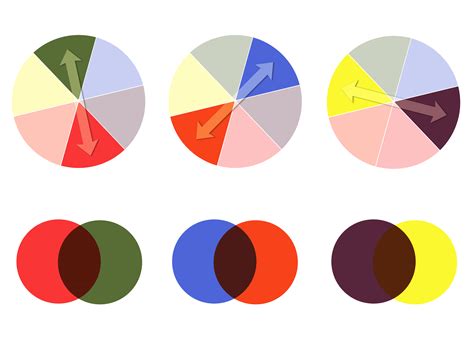How to Make Brown: A Comprehensive Guide to Mixing the Perfect Shade
Brown. It's a color we see everywhere, from the rich earth beneath our feet to the comforting warmth of chocolate. But achieving the perfect shade of brown, whether for painting, baking, or even mixing dyes, requires understanding the nuances of color mixing. This guide will explore the various methods and considerations for creating a wide range of browns, from light and sandy to deep and almost black.
Understanding the Fundamentals of Brown
Brown isn't a primary color; it's a secondary or tertiary color, meaning it's created by mixing other colors. The most common way is by combining red, yellow, and blue. However, the proportions of each color, as well as the addition of other hues, dramatically alter the final result.
Key Colors for Brown Creation:
- Red: Provides warmth and depth. Different reds (like crimson, scarlet, or maroon) will drastically change the undertones of your brown.
- Yellow: Adds lightness and brightness. Think of the difference between ochre and a deep mustard yellow.
- Blue: Introduces coolness and can create a greyish or muddy brown depending on the quantity. Ultramarine, Prussian blue, and even teal will all give different results.
- Black: Used sparingly, black adds darkness and intensity. Overuse will result in a dull, lifeless brown.
- White: Lightens the brown, creating variations from tan to beige.
Methods for Mixing Brown:
Here are several approaches to mixing various shades of brown, along with tips for achieving specific tones:
1. The Basic Brown Recipe:
Start with equal parts red, yellow, and blue. This will give you a foundational medium brown. Adjust from there based on your desired outcome.
2. Warm Browns:
To create warm browns, increase the proportion of red and yellow. Consider adding a touch of orange for extra warmth. Think terracotta, burnt umber, or chocolate brown.
3. Cool Browns:
For cooler browns, increase the amount of blue. Adding a touch of purple or green can enhance the coolness and create earthy, muted tones. Think taupe, umber, or a deep forest brown.
4. Light Browns:
To lighten your brown, gradually add white. Start with small amounts and add more until you achieve your desired lightness. This is perfect for creating beige, tan, or light sand colors.
5. Dark Browns:
To darken your brown, add a small amount of black. Be cautious not to overdo it, as too much black can create a muddy, lifeless color.
Tips for Success:
- Experiment: Don't be afraid to experiment with different color ratios. The beauty of mixing brown lies in its versatility.
- Start Small: Begin with small amounts of paint or dye, gradually adding more until you achieve the desired shade.
- Use Quality Materials: The quality of your paints or dyes will affect the vibrancy and richness of your brown.
- Lighting: Ensure you have good lighting to accurately assess the color.
Beyond the Basics: Achieving Specific Brown Shades
By adjusting the base recipe and adding other colors, you can achieve a wide array of specific brown shades. Research different brown pigments and their names to inspire your color mixing. Explore terms like burnt sienna, raw umber, and Van Dyke brown for a deeper understanding.
By mastering the art of mixing brown, you'll unlock a world of creative possibilities in painting, baking, and various other crafts. So grab your paints, dyes, or baking ingredients and start experimenting! Remember, practice makes perfect, and each batch will teach you more about this versatile and essential color.
